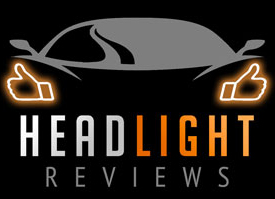Let’s take a look at the differences between 7440 and 7443 turn signal bulbs.
Because of the similar naming schemes and use cases, these two bulbs are often considered to be interchangeable.
However 7443 and 7440 bulbs are not interchangeable.
However, there are a number of differences that make each turn signal bulb better suited for different applications.
One of the main differences is that 7443 bulbs are dual filament whereas 7440s are single filament only.
They’re also used in completely different locations on your vehicle. While 7440 bulbs are used in rear turn signal lights, 7443s are mostly found in the front.
If you’re still confused about which bulb to choose, allow us to use our extensive knowledge of bulbs to help you figure out the best option for your needs.
Keep reading for more information on 7440 and 7443 bulbs.
| 7440 | 7443 |
| Single filament bulbs | Dual filament bulbs |
| Meant to be used in rear turn signal lights | Meant to be used in front turn signal lights |
| Also used as reverse lights in some sedans | Also seen in front parking lights |
| Cannot be fitted into a 7443 socket | Can be fitted into a 7440 socket |
| Will stay lit if you turn on your headlights | Will only light up if you put on your turn signals |
7440 bulbs and 7443 Turn Signal Bulbs Compared
Bulb Filament Type
The first difference you’ll notice between these two bulbs is their filaments. 7440 bulbs have only one filament in the bulb and 7443 bulbs have two, meaning you get slightly better illumination from a 7443 bulb thanks to the extra filament.
Common Use Case
When it comes to their use cases, these two bulbs are completely opposite. 7440s are meant to be used in rear turn signal lights, while 7443 bulbs are meant to be used in front turn signal lights.
Other Use Cases
Besides turn signal lights, 7440 bulbs can also be fitted as reversing lights in some sedans. Similarly, 7443 bulbs can be used in front parking lights. This is because 7440 bulbs are less intense and can safely be used as reversing lights. 7443 bulbs feature higher brightness, which is why they can be used as front parking lights.
Bulb Behaviour
When fitted in turn signal configurations, both bulbs display different behaviors depending on driver input. With 7440 bulbs, they will stay lit up when you turn on your headlights. On the other hand, 7443 bulbs only light up when you put on your turn signals.
In our experience, 7443 bulbs have the advantage over 7440 bulbs when used as turn signal bulbs, thanks to their intermittent flashing.
Interchangeability
And now the million dollar question: Can these two bulbs be used interchangeably?
Having tested a wide variety of options for both bulbs, we’ve concluded that because of the different shapes and sizes, it is only possible for a 7443 bulb to fit into a 7440 socket but not the other way around.
That means if your car requires a 7440 bulb, you are probably better off using a 7443 bulb with some slight modifications to the bulb base and connector. This provides enhanced visibility, better performance, and improved safety as other drivers clearly see your turn signals blinking.
The 7443 and 3157 bulb models, although not identical, closely rival each other in their performance and applications. The primary distinguishing factor is the size, with the 7443 bulb being slightly larger.
Both the 3157 bulb and the USA-engineered 7443 Switchback LED Bulb make excellent choices for direct turn signal replacement bulbs. They provide white/amber light filaments, along with features to prevent hyper-flashing and error codes.
The 7443 model has an edge with its built-in resistor present on the turn signal filament, which isn’t found on both filaments as with some bulbs. This feature significantly reduces the risk of overheating.
Like the 3157, the 7443 boasts dual-colored LED lights with a 360-degree output, achieving the much sought-after ‘best in class’ brightness. Similarly, it also promises a simple, “plug and play” installation process, saving valuable time.
An added advantage of the 7443 model is that it doesn’t require any additional resistors, further enhancing its appeal.
Conclusion
‘Connectors this, use cases that, blah blah blah. Just tell me which bulb I should use for my turn signals!’ If that sounds anything like you, don’t worry; we’ve got you covered.
After thoroughly testing most of the available options for both 7440 and 7443 bulbs, we’ve concluded that 7443 headlight bulbs are the clear winner.
Not only do these bulbs have dual filaments for higher brightness and better clarity, they can be retrofitted into existing 7440 sockets. Moreover, they only turn on and blink when you put on your turn signals, rather than staying on when you turn on your headlights.
So if you’re in the market for a new turn signal bulb, definitely consider 7443 bulbs.


